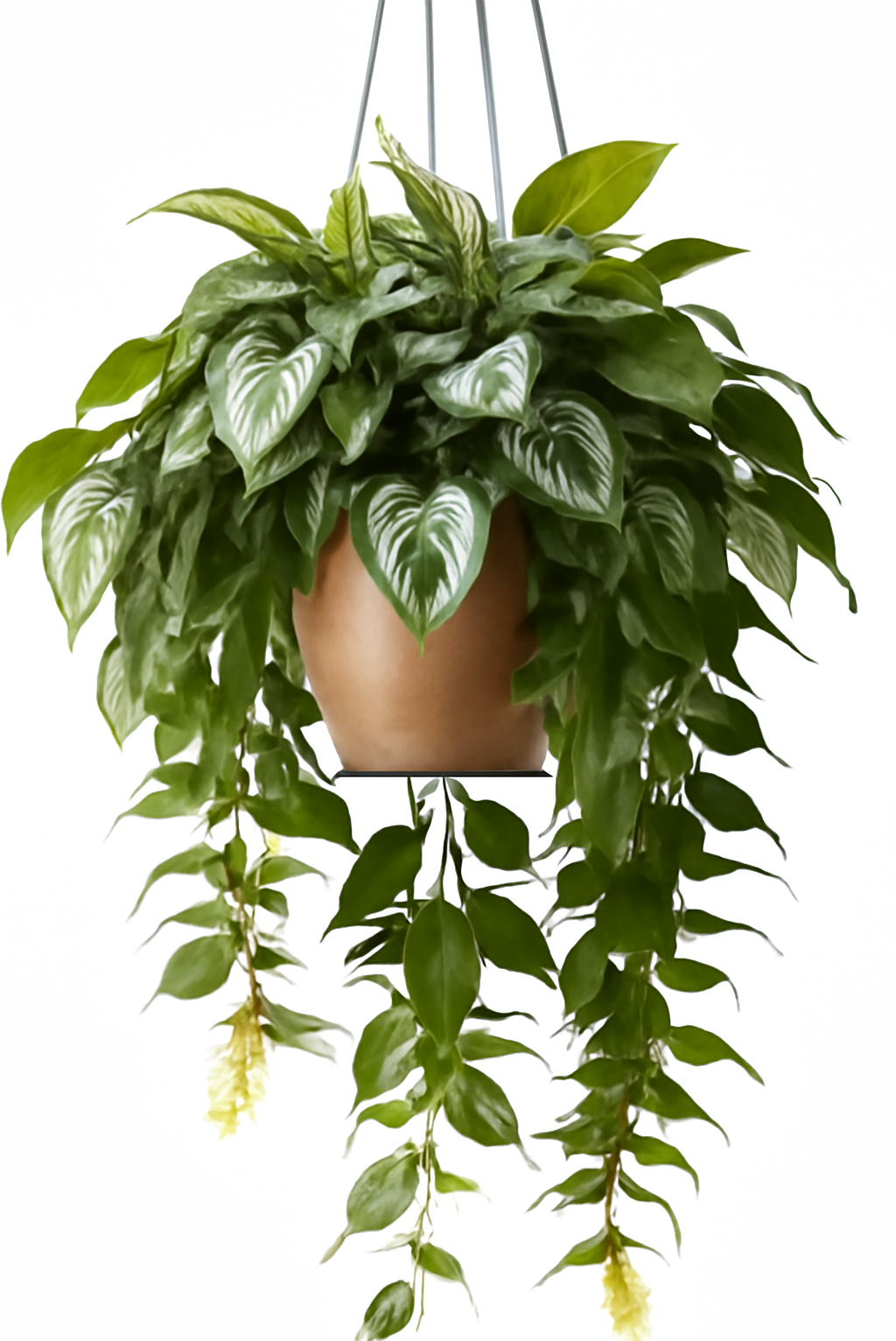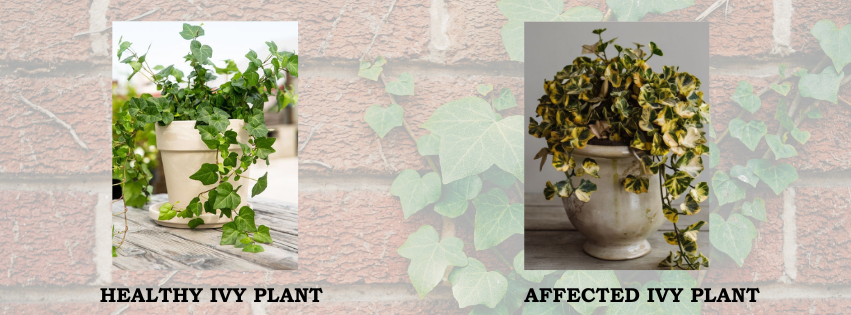
Recognize how affected Ivy plant look
Why is my ivy plant dying? 8 Expert Care & Growing Tips
I’ve always loved having ivy around the house — it adds that perfect touch of green to any space. But not long ago, I noticed its leaves were getting yellow, droopy or just falling off, and left wondering, “What did I do wrong?” I’ve been questioning if I overwatered or picked the wrong spot.If your ivy is looking more dead than alive right now, don’t panic! Let’s talk about why this happens and how to bring your plant back to life.
Ivy plants are loved for their flowing vines, but they can be hard to keep healthy. Common causes of dying ivy include overwatering, which leads to root rot; insufficient light, causing weak growth; poor drainage, trapping excess moisture; pests like- Spider mites may weaken leaves and cause wilting or yellowing; low humidity dries out foliage, leading to crispy, browning leaves; oversized pot traps water, causes root rot, while overly sandy soil may not retain enough moisture, stressing the plant. So, there are just a handful of common causes that kill most ivy plants. The good news? Once you know what to look for, these issues are totally fixable.
8 Common causes of your ivy plants dying
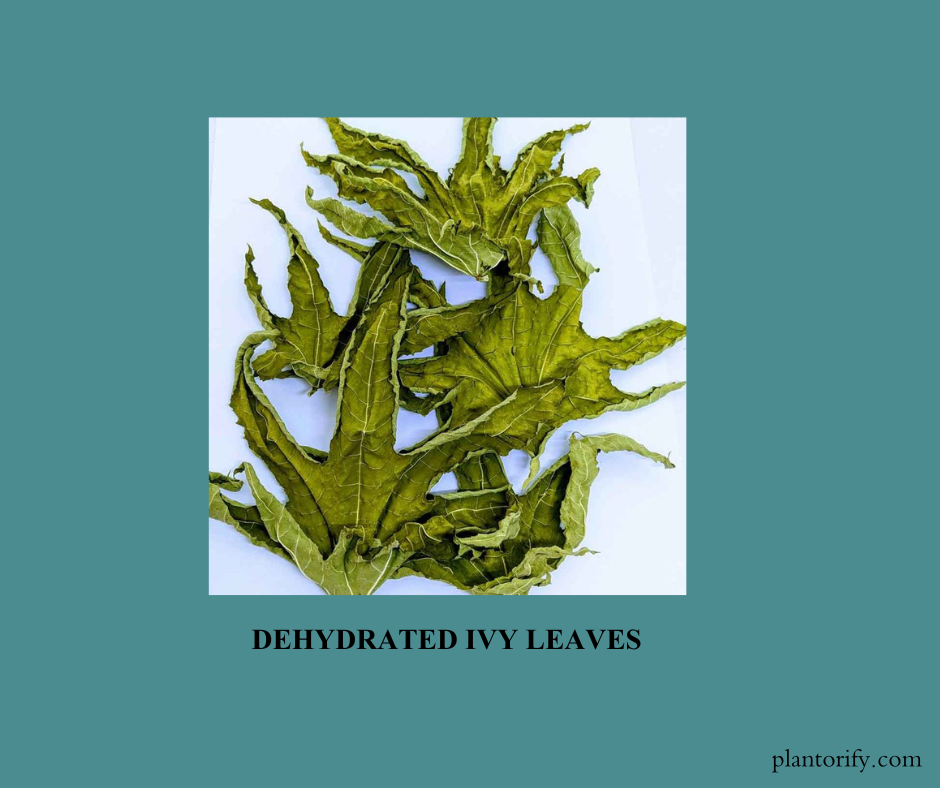
Overwatering or Underwatering :
overwatering is by far the most common reason ivy plants die.Giving ivy too much water is a top killer. Ivy roots need oxygen to survive, and when soil stays constantly wet, the roots literally suffocate, the roots can’t breathe properly, and when roots sit in waterlogged soil, they can’t get oxygen, leading to root rot.Other signs include, the plant starts wilting, yellowing, or dropping leaves,a musty smell from the soil, and black or mushy roots.
Underwatering can also be harmful to ivy plants. When the soil gets too dry for too long, the plant can’t get enough water to support its leaves and vines . As a result, the plant becomes dehydrated. The key signs that your ivy plant is underwatered are : brown leaves, burnt-looking edges and tips (starts at leaf margins).Leaves become brittle and may crumble when touched but leaves aren’t mushy. Overall wilting or drooping appearance of leaves is seen.

Lack of light :
Ivy needs bright, indirect light, like near a window with filtered sunlight. If kept in a dark corner or away from windows, it may grow slowly, become leggy (long stems with few leaves),and it doesn’t get enough energy to grow strong . Lack of light weakens the plant’s overall health and it desperately reaches for light. On the other hand, too much direct sunlight can be harmful. When ivy plants don’t get enough light, they show clear signs of struggle. Leaves often turn pale or yellowish, losing their vibrant green color. New growth may stop. Over time, the leaves may fall off, especially at the bottom, as the plant struggles to survive in low-light conditions. The ivy may look thin. The plant stretches toward the nearest light source, making it look uneven or droopy.
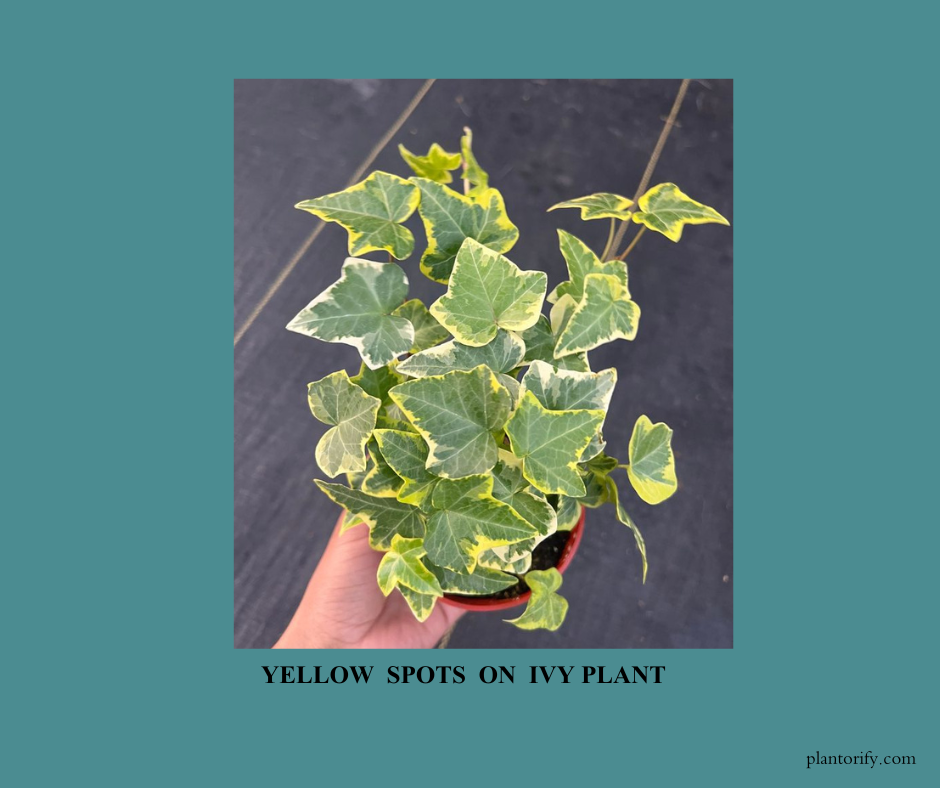
Pests
Tiny pests like spider mites, aphids,whiteflies, fungus gnats and mealybugs love ivy. Spider mites, often too small to see easily, suck plant juices, causing leaves to develop tiny yellow or white spots that eventually turn the whole leaf yellow or bronze and create web-like threads on the undersides or between stems – it looks like the world’s tiniest spider webs.The first sign is usually tiny yellow or white dots on leaves that look like someone sprinkled salt and pepper on them.The damage spreads quickly because spider mites reproduce rapidly in warm, dry conditions.
Other pests like aphids show up as small green or black bugs clustered on new growth. On the other hand, scale insects that look like small brown or white bumps stuck to stems and leaves. Mealybugs appear as white, cotton-like clusters in leaf joints. If your ivy suddenly looks dotted, has mysterious webbing, or you spot tiny moving bugs, you’ve got a pest problem that needs immediate attention.
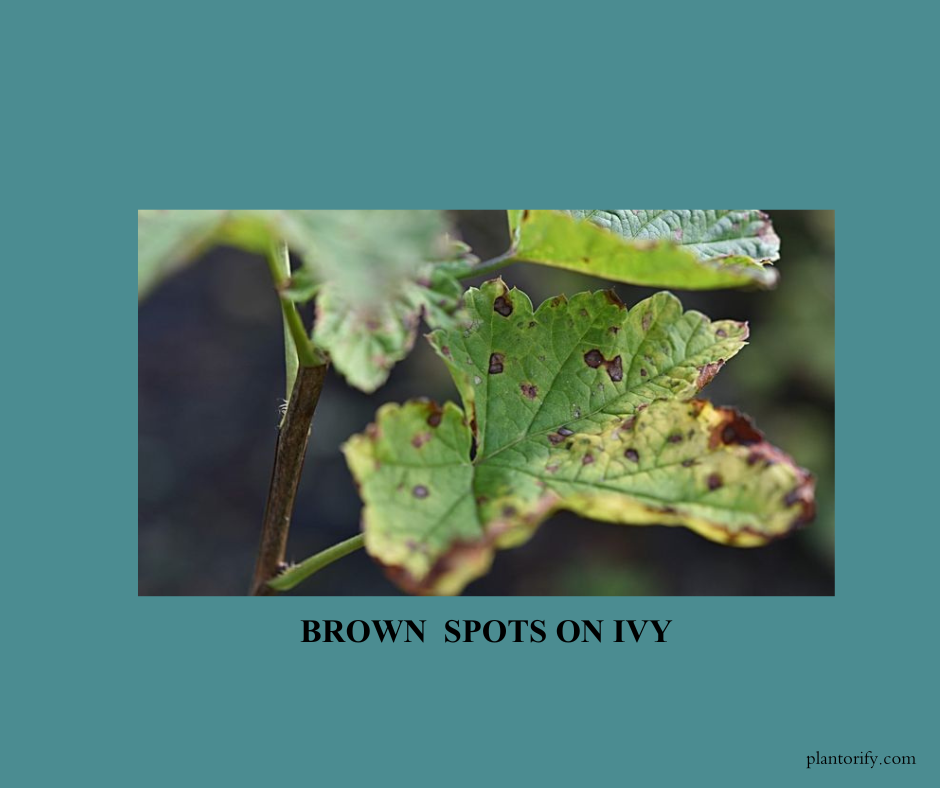
POOR DRAINAGE
Even if you’re careful about watering frequency, poor drainage will kill your ivy. Water should flow freely through the soil and out the bottom within a few seconds of watering. Ivy needs soil and pots that let water flow through. If the soil is too dense (like clay-heavy dirt) or the pot lacks drainage holes, water gets trapped.Pots without drainage holes are death traps because excess water has nowhere to go.When water doesn’t drain properly, roots stay wet for too long, causing them to rot and struggle to absorb oxygen. You’ll notice leaves turning yellow and feeling soft or mushy. The soil might smell musty, and fungus or mold may appear on the surface. Growth slows, and the whole plant can start looking tired. A pot without drainage holes or overly compacted soil is often the culprit.
LOW HUMIDITY
Ivy enjoys moderate to high humidity levels. .Ivy plants originated in humid environments; they have a hard time in the dry air inside most homes—especially in winter when heaters make the air even drier.In dry environments, plants like ivy may react to low humidity with crisp brown leaf tips, curling edges, or leaves that look papery. You might see wilting even when the soil is damp,because it’s not the roots that lack water, it’s the air.Plants like Ivy crave moist conditions, and low indoor humidity from heaters or AC units can leave them suffocated.
Nutrient Deficiency
Nutrient deficiency is another common cause of ivy plants dying and can be added to the list of issues affecting ivy health. Ivy plants need essential nutrients like nitrogen, phosphorus, and potassium to grow strong and stay green. When the soil lacks these nutrients, often due to infrequent fertilizing, the plant suffers.If ivy is planted in old or poor-quality soil, it lacks necessary nutrients.
The classic sign is older leaves at the bottom of the plant turning yellow first, while newer growth stays relatively green.This is the plant’s way of moving nutrients from old leaves to support new growth. The yellowing is usually even and gradual, not the patchy yellow you see with overwatering or pests. You might also notice that new leaves are smaller than they used to be, growth has slowed , and the plant just looks tired. The stems may appear thinner, and the plant might stop producing new growth entirely during what should be the growing season
TEMPERATURE STRESS:
Ivy prefers stable temperatures (ideally 15–24°C or 60–75°F). Most homes are actually too warm for ivy, especially near heating vents, fireplaces, or in sunny, stuffy rooms where temperatures rise.
On the other hand, ivy can tolerate cooler temperatures but doesn’t like sudden temperature changes or cold drafts from air conditioning or open windows in winter. This can cause wilting, leaf drop, or discoloration. The plant may also become more prone to pests and diseases when it’s high temperature.
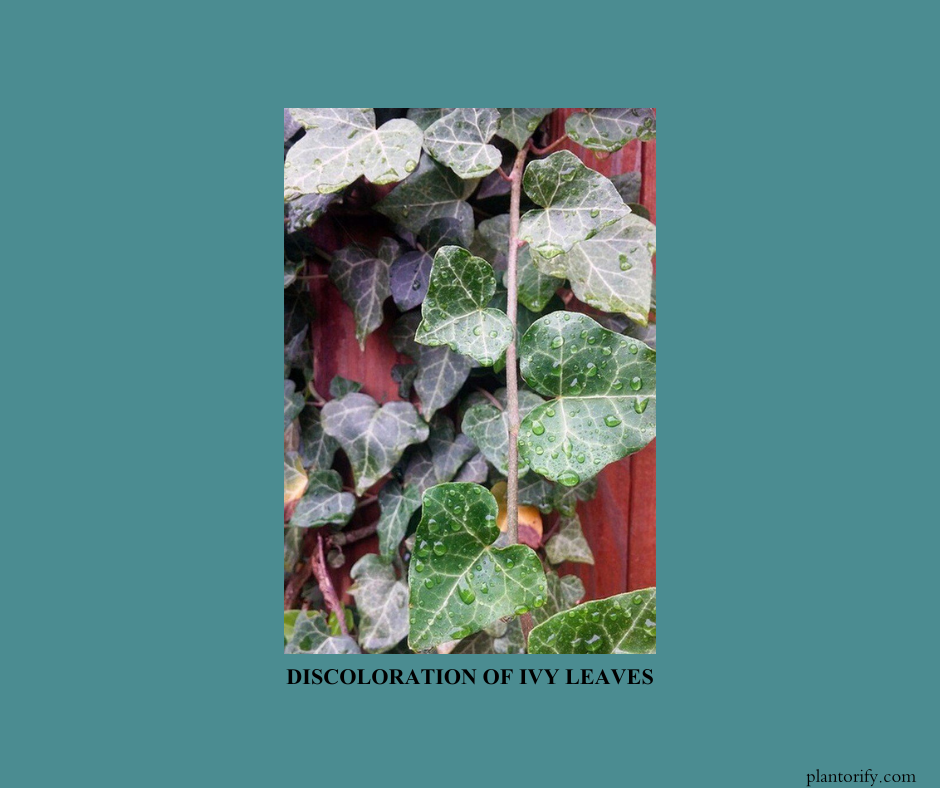
Transplant Shock :
Transplant shock is a common reason why ivy plants may start to struggle. Moving ivy to a new pot, location, or even just rotating it significantly can cause harm that looks like the plant is dying. When the plant is repotted, its roots are often disturbed, which can temporarily affect its ability to absorb water and nutrients. As a result, the ivy may start to drop leaves, look wilted, or stop growing for a while. The leaves might also turn yellow or brown. This shock can be made worse if the new environment has different light, temperature, or watering conditions.
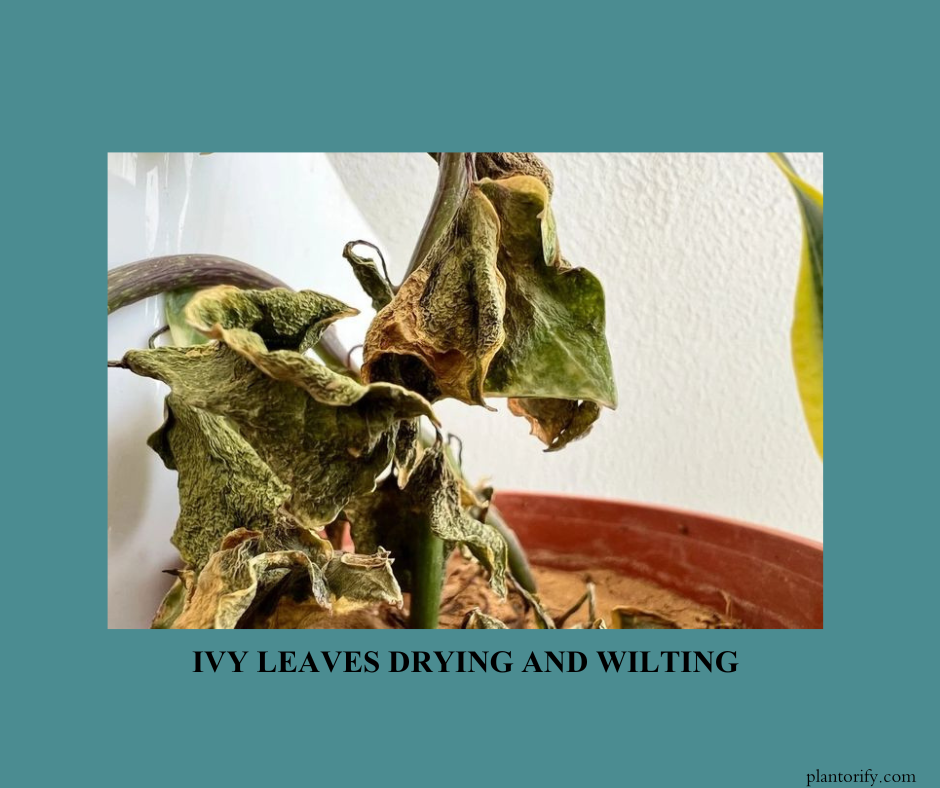
How to save your dying Ivy plant: Expert tips for prevention and care.
-
- Prevent Overwatering: Check soil moisture with your finger before every watering. Only water when the soil feels dry. Use a well-draining potting mix and pots with drainage holes. Water thoroughly but less frequently, typically once a week or less. Empty saucers after 30 minutes so plants aren’t sitting in standing water. If roots are already rotted, trim away black mushy parts and repot in fresh, dry soil.
-
- Avoid Underwatering: Keep soil consistently moist but not wet. Set a watering schedule, adjust based on your home’s conditions.
-
- Improve Drainage: Use a well-draining potting mix with sand, and always choose a pot with drainage holes. Avoid heavy soils like garden dirt that trap water and use light, airy soil so that excess water can flow out easily and the roots can breathe. Check that water flows out easily when watering. Add a layer of pebbles at the bottom if needed. If water sits on top of the soil, change the pot immediately with a better-draining mix. Test drainage by watering; water should flow through and out of the bottom within seconds, not minutes.
-
- Control Pests: Inspect leaves at least once a week, especially undersides, for spider mites or aphids. If pests appear, spray with insecticidal soap or neem oil. Keep ivy clean by gently wiping leaves with a damp cloth to deter bugs. Increase humidity since spider mites hate moisture. Separate new plants from your affected plants. Keep plants healthy since attacked plants attract more pests.
-
- Ensure Enough Light: Place ivy in bright, indirect light, like near a north or east-facing window. Avoid dark corners or direct sun, as too little light causes leggy growth and too much sunlight can burn the leaves. Rotate the plant occasionally to ensure even light exposure. If you only have low-light areas, invest in a grow light. Move closer to windows during winter when light is weaker.
-
- Boost Humidity: Increase humidity by misting leaves occasionally, placing a tray of water with pebbles near the plant (pot shouldn’t touch water directly). Group ivy with other plants to create a humid microclimate, especially in dry indoor spaces. Use a humidifier, mainly during winter. Avoid placing ivy near heating vents or fireplaces.
-
- Minimize Transplant Shock: Repot ivy only when needed, using a pot just one size larger. Handle roots gently and use similar soil to ease the transition. Water lightly after repotting and keep in bright, indirect light without fertilizing for a month.
-
- Natural Aging : Natural aging is a normal part of an ivy plant’s life cycle and not necessarily a sign of poor health. As the plant grows, older leaves,especially those near the bottom,may turn yellow, dry up, and fall off.Older stems may become woody and brown at the base. This happens because the plant is focusing its energy on producing new leaves and stems. It’s a natural way for the plant to refresh itself. As long as the top part of the plant looks healthy and new growth is appearing, there’s usually nothing to worry about. Simply remove yellowed leaves by gently pulling them off or cutting with clean scissors. This keeps the plant looking tidy and prevents any potential fungal issues. Don’t change your care routine if the plant is otherwise healthy and producing new growth. Some leaf drop during seasonal changes (especially moving from outdoor summer conditions to indoor winter conditions) is completely normal and doesn’t require intervention.
Conclusion:
I know how heartbreaking it is to watch a plant you’ve cared for start to wilt, especially when you’re not sure what went wrong. The good news is that most “dying” ivy plants are actually just crying out for small adjustments in their care, and with a little care, you can usually turn things around. Remember that small things like checking the soil before watering, providing bright indirect light, maintaining good humidity, and watching for early signs of pests can save your ivy. These plants want to grow, and once you understand their basic needs, they’ll grow full and beautiful, hanging down nicely and making any space look fresh and lively.
More importantly, understanding your plant’s signals isn’t just about saving a houseplant,it’s a small but powerful step toward reconnecting with nature.Every yellow leaf you remove, every adjustment you make to improve their environment, and every new shoot that originates is a small act of environmental supervision.
Frequently asked questions :
Q1) How to get rid of ivy fungus?
ANSWER- To treat ivy fungus, first remove infected ivy leaves and place them in plastic bags to prevent spore spread. Improve soil drainage and remove affected plant parts manually. For treatment, use a solution of one part white vinegar mixed with 10 parts water on remaining plants.Ensure better airflow by spacing plants properly. Use a fungicide containing neem oil, sulfur, or copper. Water the base of the plant, not the leaves, to prevent further fungal growth.Ensure the ivy isn’t overwatered and gets adequate sunlight
Q2) Will dried out ivy come back?
ANSWER – Yes, dried ivy can recover if the root system remains unaffected.However, if it’s completely dried out crispy leaves, brittle stems, and dead roots , it’s unlikely to recover.
Q3) How to get rid of an ivy infestation?
ANSWER- To get rid of an ivy infestation, cut the vines at the base and pull them off trees or structures. Dig up all the roots completely, since any left behind can grow back. Use a herbicide like glyphosate. Keep checking for new growth and remove it if needed.
Q4) What is the lifespan of ivy?
ANSWER- English ivy can live for decades, often 50–100 years or more, under ideal conditions. Its lifespan depends on factors like climate, soil, and maintenance. In outdoor settings, ivy can become invasive and persist indefinitely if not controlled. Indoor ivy plants typically last 5–10 years with proper care.
Q5) Does white vinegar get rid of ivy?
ANSWER-Yes, white vinegar can help kill ivy when sprayed directly on leaves on a sunny day. However, it works best on young ivy. It may not kill the roots completely. Here, horticultural vinegar with higher acetic acid content (20%) is most effective, though household vinegar can work with repeated applications.
Q6)Why has my ivy gone limp?
ANSWER- Ivy becomes limp due to overwatering, underwatering,lack of light, root rot, poor drainage, or fungal infections. Check soil moisture and drainage, and inspect for signs of disease or pest damage.Trim damaged leaves and take proper care to revive it.
Q7) will ivy die in the winter?
ANSWER- Most ivy varieties are evergreen and survive winter, though growth slows significantly. English ivy is evergreen and generally survives winter, especially in temperate climates. Some varieties may die back in extreme cold but often recover from roots in spring.
Q8) why is my ivy plant drying up?
ANSWER- In most cases, Ivy dries up from underwatering, low humidity, too much direct sunlight, root problems, or fungal diseases. Try to make sure consistent moisture, adequate humidity, and check for root health issues.

